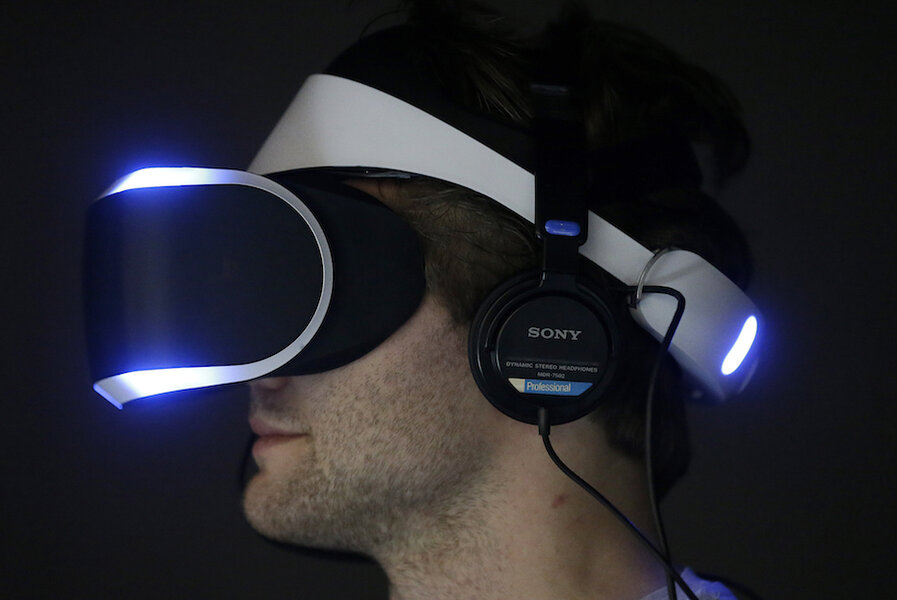How Sony's new VR headset could help the industry
Loading...
Sony wants users to enter virtual reality through their PlayStations.
On Tuesday, Sony showed off its own virtual reality headset at the 2016 Game Developer Conference in San Francisco. Information and images have been available on the project for months, but the price and launch date remained mysteries. Sony cleared up those mysteries during its onstage performance: the headset would be on the cheaper end of the market spectrum at $399 and launch in October.
The PlayStation VR announcement is the latest for a growing, but still young market. The industry is filled with differing companies and unique designs, from Microsoft to Google to Samsung to HTC. But while some would see the crowded market as a breeding ground for competition, the companies might see themselves as one big team.
“I always say that we are competing in the sense that engineers compete to create the best tech possible,” Shuhei Yoshida, president of worldwide studios at Sony, said in an interview with The Verge. “We're in this together, to really help each other to get more people to be interested and excited and become fans of VR.”
Virtual reality is a technology that aims to allow a headset to transport users to a computer-generated world. Computing power and graphics have taken decades to develop, but the hard part of VR is getting people to try the product, Mr. Yoshida explained in the interview.
VR is still a new technology and largely untested with the mass market. Although it has a range of big backers – Facebook, Google, Sony – there’s no guarantee the technology will take off as companies expect. In that case, anything that helps publicity is helping all VR tech.
“Someone's first experience might be with the HTC Vive, and if that person gets excited about VR, that's great for all of us,” Yoshida said.
Similar sentiments have been expressed by other companies developing VR. At the Oculus Connect conference in September, Mark Zuckerberg cautioned investors about the low initial popularity of VR, stating, “This is going to grow slowly.”
But if big sales for one VR headset could help others, Sony's PlayStation VR could be a needed boost for the entire industry, as experts believe it will take a dominant position in the VR market for gaming.
Where the HTC Vive and Oculus Rift retail for $799 and $599, respectively, PlayStation VR will sell for $399. To further push the price difference, the PlayStation VR is also only reliant on users having a PlayStation 4, which is relatively inexpensive compared to a gaming computer that is required for the other two devices.
Combine this accessible price and the existing network of PlayStation fans, and you could have 1.6 million people buying Sony's headset by 2017, according to the research firm IHS.
"Sony's walled garden approach to the PS4 platform means it is well placed to provide a better controlled and consistent VR experience to consumers,” IHS game analyst Piers Harding-Rolls said. “This will be important in driving adoption and positive word of mouth."








